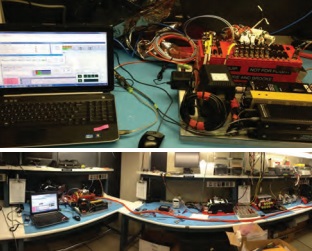Chapter: Engineering Successes, new invention technology, Research project papers,
Portable Data Acquisition SysTem (PDAT): Making Ideas Reality

Portable Data Acquisition SysTem (PDAT):
Making Ideas Reality
Armstrong's PDAT
technology offers a versatile solution for displaying and archiving data in
real time at remote locations. Developed to collect data from strain gauges and
fiber optic sensors as part of the Adaptive Compliant Trailing Edge (ACTE)
project, the technology easily supports
other experiments by
means of interchangeable hardware cards that collect data from pressure
transducers, pressure scanners, and accelerometers. It has already been used in
Armstrong's Flight Loads Laboratory (FLL)
and in industry laboratories in Michigan and California to
support ACTE research. PDAT can be quickly reprogrammed to support various
tests and can display and archive data from virtual streams. This portable and
flexible technology supports remote data collection for field experiments where
there is not a lot of room to work and where live transmission is limited.
Work to date: In addition to its use
in Armstrong's FLL and in industry laboratories, the PDAT provided
designers with valuable feedback data during the construction and design phase
of the ACTE project. The system safely gathered data from the aircraft system
during wing loads testing without the need to turn on aircraft power. PDAT data
were verified against the loads system data to assure system accuracy.
Looking ahead: This unique system has
64 channels for analog data, 32 channels for thermocouples, and
eight signal conditioning cards. It is currently configured to gather strain
gauge and thermocouple inputs, but a host of other hardware can be installed,
making the system versatile enough to become a successful component of current
and future projects.
Engineering Successes
Armstrong's Research and Engineering Directorate is responsible
for the overall engineering content of flight research projects. Our engineers
provide technical expertise in aerodynamics; guidance, navigation, and control;
propulsion; static and dynamic structures; flight hardware and software; flight
and ground test instrumentation and data systems; and system engineering and
integration. They apply their expertise across the spectrum of Armstrong's many
activities and also support the development and continual evolution of
engineering tools and test techniques. Here are highlights from a few recent
and particularly notable engineering success stories.
Related Topics